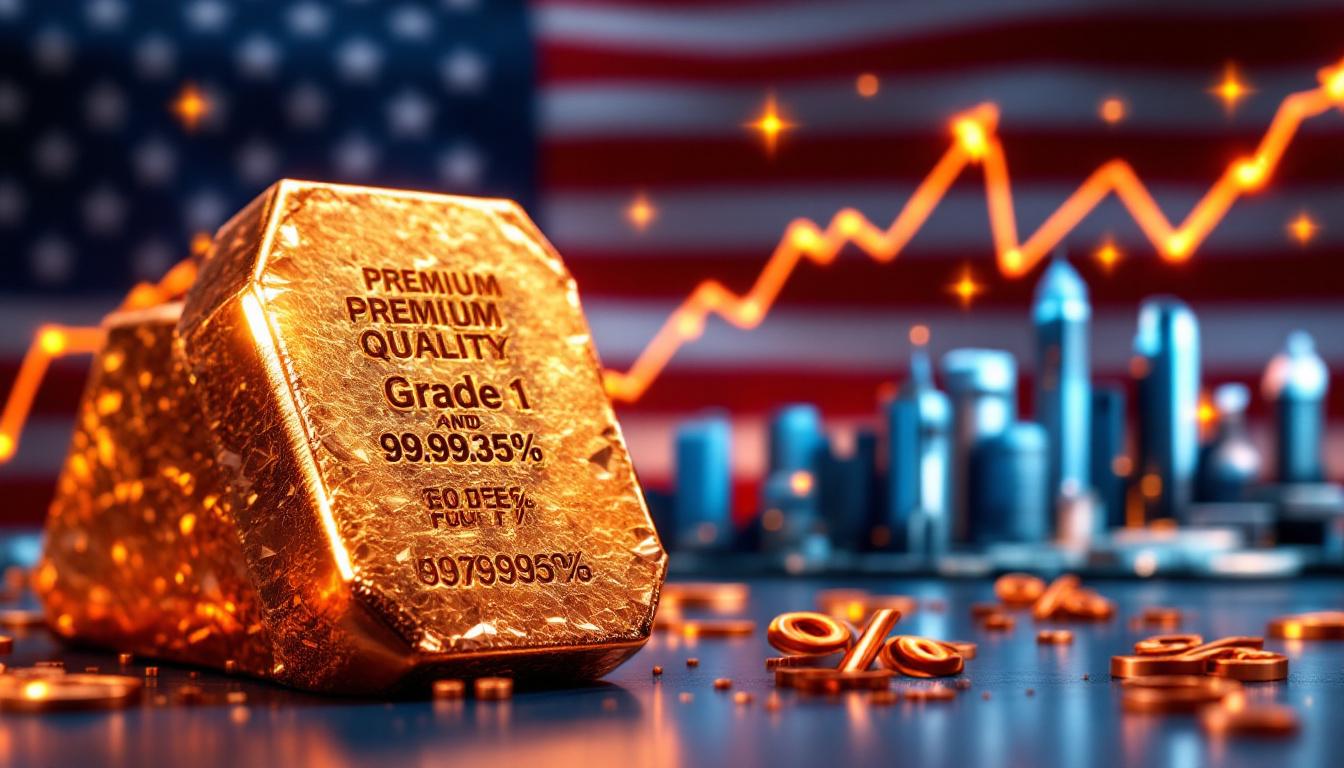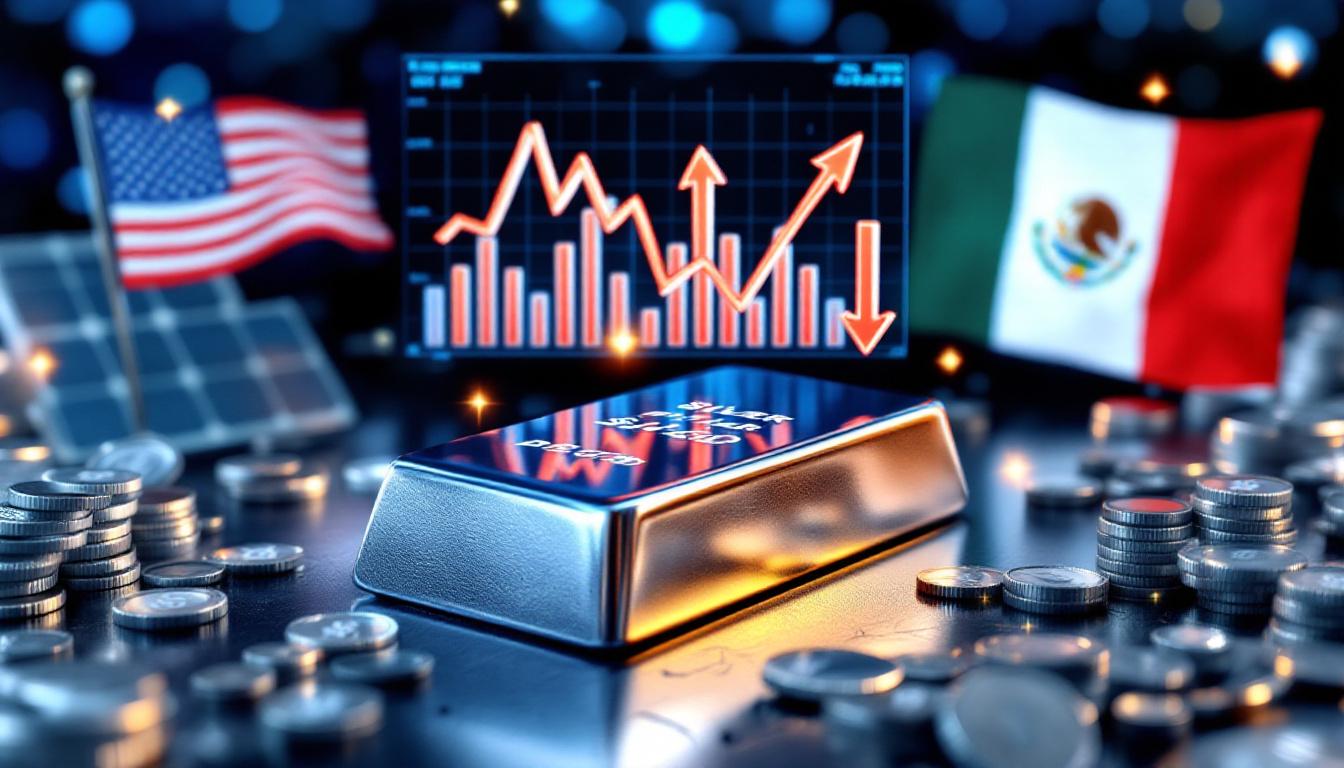What Are Rare Earth Elements and Why Do They Matter?
Rare earth elements (REEs) comprise a group of 17 metallic elements that, despite their name, are relatively abundant in the Earth's crust. What makes them "rare" isn't their scarcity but the complex, expensive, and environmentally challenging processes required to extract and refine them. These elements—including neodymium, dysprosium, terbium, and praseodymium—have become the backbone of modern technology and the green energy transition.
Strategic Importance of Rare Earth Minerals
The strategic value of rare earths lies in their unique electronic, magnetic, and luminescent properties. These elements are essential components in everything from smartphones and computers to missile guidance systems and electric vehicle motors. A single F-35 fighter jet requires approximately 920 pounds of rare earth materials, while each wind turbine may use up to 600 kg of rare earth elements in its permanent magnets.
These minerals have become the unsung heroes of the global transition to renewable energy. Wind turbines rely on neodymium and dysprosium for their permanent magnets, while electric vehicles need these energy transition minerals for both motors and batteries. As countries worldwide accelerate their net-zero carbon commitments, demand for these critical minerals is projected to increase by 300-600% by 2040.
"The nation that controls the rare earths controls the future of high technology manufacturing," notes industry analyst John Seaman of the French Institute of International Relations.
China's dominant position in the global rare earth supply chain has created a strategic vulnerability for many countries. While China's actual mining output represents about 60% of global production, its near-monopoly in processing capabilities—estimated at 85-90% of global capacity—gives it extraordinary leverage in this critical minerals strategy.
China's Near-Monopoly in the Global Supply Chain
China's rare earth dominance didn't happen by accident. Beginning in the 1980s, the Chinese government designated rare earths as a strategic resource and invested heavily in mining, processing, and manufacturing capabilities. While other countries shied away from the environmental impacts and costs of rare earth production, China embraced the sector as part of its long-term industrial policy.
The country's advantage stems from several factors:
- Geological advantage: China possesses significant deposits of rare earth elements, particularly in Inner Mongolia
- Cost effectiveness: Lower environmental standards and labor costs historically reduced production expenses
- Vertical integration: China developed capabilities across the entire value chain from mining to end products
- Policy support: Consistent government backing through subsidies, research funding, and export controls
This concentration of power has created significant vulnerabilities in global supply chains. When China restricted exports to Japan in 2010 during a territorial dispute, prices for some rare earth elements surged by over 500%. This demonstrated how control over these resources could be leveraged for geopolitical advantage.
How Did China's Rare Earth Exports Change in June 2025?
The global rare earth market witnessed a dramatic shift in June 2025 when China unexpectedly opened the floodgates on exports after months of increasingly tight restrictions. This sudden policy reversal sent ripples through supply chains and sparked intense speculation about Beijing's strategic calculations.
Record-Breaking Export Volumes
According to Chinese customs data reported by the South China Morning Post, China's rare earth exports reached 7,742.2 tonnes in June 2025—the highest monthly total since December 2009. This represented a remarkable 60% year-over-year increase compared to the 4,828.7 tonnes exported in June 2024. The surge was equally impressive on a month-to-month basis, with June exports jumping 32% from the 5,865 tonnes shipped in May 2025.
The timing of this export surge was particularly notable given that Beijing had tightened controls on rare earth shipments just two months earlier in April 2025. This abrupt policy reversal caught many market observers by surprise and triggered speculation about behind-the-scenes diplomatic developments.
[Table: Monthly Export Trends]
Month | 2024 Exports (tonnes) | 2025 Exports (tonnes) | YoY Change
------------|----------------------|----------------------|------------
January | 3,655 | 3,892 | +6.5%
February | 3,429 | 3,516 | +2.5%
March | 4,115 | 4,203 | +2.1%
April | 4,427 | 3,256 | -26.5%
May | 4,991 | 5,865 | +17.5%
June | 4,828.7 | 7,742.2 | +60.0%
Comparative Analysis of Export Trends
When viewed in historical context, the June 2025 export volume represents a significant departure from China's usual rare earth trade patterns. The last time China exported comparable volumes was during the pre-restriction era of 2009, before Beijing began implementing increasingly sophisticated export controls as part of its strategic minerals policy.
The chart of monthly export volumes throughout 2024-2025 reveals a distinctive pattern:
- Relatively stable exports during the first quarter of both years
- Sharp contraction in April 2025 following new export restrictions
- Gradual recovery in May 2025 as some exceptions were granted
- Dramatic surge in June 2025 signaling a major policy shift
This export volatility corresponds directly with key geopolitical developments, particularly in U.S.-China relations. The April 2025 restrictions came in the wake of expanded U.S. semiconductor controls targeting Chinese companies, while the June relaxation followed reports of progress in bilateral negotiations on critical mineral access.
Why Did China Suddenly Increase Rare Earth Exports?
The dramatic shift in China's rare earth export policy reflects complex geopolitical calculations and strategic trade considerations rather than simple market dynamics. By understanding the context behind these decisions, we can better anticipate future developments in this critical sector.
Geopolitical Context Behind Export Controls
China's tightening of rare earth export controls in April 2025 was widely interpreted as a response to escalating trade tensions with the United States. This move came shortly after Washington expanded semiconductor restrictions against Chinese companies and announced new tariffs on Chinese electric vehicles and battery components.
The timing was not coincidental. By restricting access to critical minerals essential for high-tech manufacturing and green technologies, Beijing sent a clear message about its willingness to use its resource advantage as leverage in broader trade negotiations. The restrictions particularly impacted:
- Defense contractors requiring rare earths for guidance systems
- Electric vehicle manufacturers dependent on rare earth magnets
- Renewable energy companies building wind turbines
- Electronics manufacturers producing consumer devices
This approach followed a familiar pattern in China's strategic playbook—using controlled access to critical resources as a bargaining chip in international negotiations. Similar tactics were employed during the 2010 dispute with Japan and during previous trade tensions with the United States.
Recent Diplomatic Developments
The unexpected June 2025 export surge appears linked to diplomatic breakthroughs behind closed doors. According to the South China Morning Post, citing Wall Street Journal reporting, China issued six-month export licenses to select American manufacturers in late June after months of negotiations.
This development suggests a pragmatic recalibration in Beijing's approach to rare earth trade. Rather than maintaining across-the-board restrictions that might accelerate global diversification efforts, China appears to have opted for a more targeted approach that preserves its market position while easing specific pain points in the relationship with key trading partners.
Simultaneously, China's Ministry of Commerce announced improvements to export approval processes for European countries, indicating a multi-regional diplomatic strategy. Europe's heavy dependence on Chinese rare earths for its manufacturing sectors made it particularly vulnerable to supply disruptions.
"China appears to be using differentiated access to rare earths as a sophisticated diplomatic tool, rewarding cooperation while maintaining leverage through the temporary nature of these concessions," notes geopolitical analyst Rebecca Smith.
These developments reflect China's recognition that while rare earths provide valuable leverage, overplaying this hand could accelerate already growing efforts to establish alternative supply chains—ultimately undermining China's long-term market position.
How Are Global Markets Responding to China's Export Surge?
The sudden increase in Chinese rare earth exports has reverberated throughout global supply chains, providing temporary relief for manufacturers while raising questions about long-term market stability and strategic vulnerabilities.
Impact on International Supply Chains
The immediate effect of China's export surge has been a welcome easing of supply constraints for industries dependent on these critical minerals. After months of delivery delays, production bottlenecks, and price volatility, manufacturers across multiple sectors have reported improved access to key materials.
This relief is particularly notable in:
- Electric vehicle production: Major automakers had been forced to slow production lines due to magnet shortages
- Wind turbine manufacturing: Several European projects faced delays of 3-6 months
- Consumer electronics: Smartphone and laptop makers scrambled to secure alternative supplies
- Defense contracting: Military procurement programs faced potential timeline extensions
The price impact has been equally significant. After reaching record highs in May 2025, prices for key rare earth elements have moderated substantially:
[Table: Price Changes for Key Rare Earth Elements (June 2024 - June 2025)]
Element | June 2024 ($/kg) | May 2025 ($/kg) | June 2025 ($/kg) | Change from Peak
-------------|-----------------|-----------------|------------------|------------------
Neodymium | 95 | 198 | 127 | -36%
Dysprosium | 412 | 685 | 495 | -28%
Terbium | 1,256 | 1,890 | 1,470 | -22%
Praseodymium | 89 | 175 | 114 | -35%
However, market analysts caution that this price moderation may be temporary. The six-month nature of the new export licenses to American manufacturers suggests China is maintaining flexibility to adjust its policy as geopolitical conditions evolve.
European Market Reactions
Europe's response to China's export surge has been particularly notable given the region's acute vulnerability to rare earth supply disruptions. The European Union imports approximately 98% of its rare earth materials from China, with minimal domestic production or processing capabilities.
"Recent supply disruptions have unsettled local businesses," notes the South China Morning Post, highlighting how European manufacturers have been caught in the crossfire of U.S.-China tensions. The automobile industry has been especially impacted, with several German manufacturers reporting production delays earlier in 2025.
The improved export approval processes announced by China's Ministry of Commerce have been cautiously welcomed by European officials, but they've simultaneously accelerated efforts to reduce dependency through:
- The European Raw Materials Alliance (ERMA): Intensifying efforts to develop domestic mining and processing
- Recycling initiatives: Expanding programs to recover rare earths from electronic waste
- Strategic partnerships: Strengthening ties with alternative suppliers like Australia and Vietnam
- Research funding: Increasing support for rare earth substitution technologies
Despite the immediate relief, European policymakers remain concerned about their structural vulnerability to future supply restrictions. As one EU Commission official noted anonymously, "We cannot base our industrial future on materials we have so little control over."
What Does This Mean for Global Rare Earth Supply Security?
The recent volatility in China's rare earth export policies has intensified global efforts to build more resilient supply chains. While the immediate crisis may have eased, the fundamental security challenges remain largely unaddressed.
Diversification Efforts Outside China
The pursuit of alternative rare earth sources has accelerated significantly since 2020, with several major projects now moving toward production. These efforts span multiple continents and approaches:
-
United States: MP Materials has expanded operations at Mountain Pass, California, aiming to restore domestic processing capabilities by 2026 with $35 million in Department of Energy funding. The company plans to establish a complete mine-to-magnets supply chain.
-
Australia: Lynas Rare Earths, the largest producer outside China, has expanded its Mt. Weld mining operations and is developing new processing facilities in Kalgoorlie, Australia, and Texas, USA, supported by government contracts.
-
Canada: Saskatchewan Research Council is developing a rare earth processing facility expected to begin operations in late 2025, focusing on monazite processing from existing mining operations.
-
Europe: The Norra Kärr project in Sweden and Norway's Fen complex represent potential European sources, though both face regulatory hurdles and environmental concerns.
Recycling initiatives have also gained momentum, with companies like Urban Mining Company achieving 95% recovery efficiency from electronic waste. Their patented magnet-to-magnet recycling process produces neodymium magnets with properties matching newly manufactured alternatives.
Research into substitutes continues, with promising developments in:
- Iron-nitride magnets as alternatives to neodymium-based permanent magnets
- Cerium-based catalysts replacing more scarce rare earths in automotive applications
- Induction motors reducing rare earth requirements in certain electric vehicles
Long-term Strategic Implications
Despite these diversification efforts, China's structural advantages in the rare earth supply chain remain formidable. The country's integrated industrial ecosystem, technical expertise, and cost advantages will be difficult to replicate fully in the near term.
The persistence of these advantages means that global technology sectors will likely remain vulnerable to supply disruptions for years to come. Most non-Chinese projects face common challenges:
- Capital intensity: Building competitive processing facilities requires billions in investment
- Technical complexity: Rare earth separation expertise remains concentrated in Chinese companies
- Environmental hurdles: Strict regulations increase costs and timeline uncertainties
- Economic viability: Price competition from Chinese suppliers threatens profitability
These realities have accelerated "friend-shoring" strategies, where countries seek to secure supplies from politically aligned nations rather than attempting complete self-sufficiency. The U.S.-led Minerals Security Partnership, launched in 2022 and expanded in 2024, exemplifies this approach by coordinating investments across allied nations.
"We're not going to replace China in the rare earth supply chain overnight," explains minerals security expert Daniel McGroarty. "The goal is to build sufficient alternative capacity to reduce vulnerability to coercion while accepting that China will remain a major player."
The ultimate challenge remains balancing cooperation with competition in critical mineral access—maintaining sufficient trade to support economic growth while developing enough alternative capacity to mitigate strategic vulnerabilities.
What Could Happen Next in the Rare Earth Market?
The rare earth market stands at a pivotal juncture, with recent Chinese export policy shifts representing just one move in a complex strategic game. Understanding potential future scenarios can help businesses and policymakers prepare for continued volatility.
Potential Future Scenarios
Scenario 1: Renewed Export Restrictions
Despite the current easing, China could reimpose strict export controls if geopolitical tensions escalate again. Several potential triggers exist:
- Further U.S. semiconductor restrictions targeting Chinese companies
- Expanded tariffs on Chinese clean energy products
- Heightened tensions over Taiwan or other security issues
- Changes in Chinese domestic supply-demand balance
Such restrictions would likely target specific industries or countries rather than being implemented across the board, reflecting China's increasingly sophisticated approach to economic statecraft.
Scenario 2: Cyclical Pattern Establishment
The recent pattern of tightening followed by selective easing could become a new normal in China's rare earth policy. This approach maximizes strategic leverage while minimizing the incentives for complete supply chain decoupling.
A cyclical pattern would likely feature:
- Periodic tightening of export controls during diplomatic tensions
- Selective easing for strategic partners or as negotiating concessions
- Gradual adjustment of quotas to maintain market dominance
- Different treatment for different rare earth elements based on strategic value
Scenario 3: Supply Diversification Impact
As non-Chinese rare earth projects come online between 2025-2028, China's market power may gradually diminish. Key developments to watch include:
- MP Materials' vertical integration from mining to magnets (2026)
- Lynas Rare Earths' expanded processing capacity (2025-2026)
- Rainbow Rare Earths' South African projects (2027)
- European projects overcoming regulatory hurdles (2028+)
The impact of these projects will vary significantly by element, with heavy rare earths likely remaining more concentrated in Chinese supply chains than light rare earths.
Scenario 4: Technological Disruption
Breakthroughs in substitution or recycling technologies could fundamentally alter market dynamics. Research areas with disruptive potential include:
- High-performance magnets using reduced or zero rare earth content
- Advanced recycling technologies achieving >95% recovery rates
- New extraction methods for previously uneconomic deposits
- Asteroid mining advances with potential for rare earth extraction
Additionally, recent policy changes like the mineral executive order from the U.S. and Australia's planned critical minerals reserve could significantly impact how nations approach their mineral security strategies.
Market Forecasts and Expert Predictions
Demand for rare earth elements is projected to grow substantially through 2030, driven primarily by clean energy technologies and electrification. According to Adamas Intelligence forecasts, demand for magnet rare earths (neodymium, praseodymium, dysprosium, and terbium
Want to Stay Ahead of the Next Major Mineral Discovery?
Discovery Alert's proprietary Discovery IQ model delivers instant notifications on significant ASX mineral discoveries, empowering investors to identify rare earth and critical mineral opportunities before the market moves. Visit our discoveries page to see how major mineral discoveries have delivered exceptional returns and start your 30-day free trial today.




